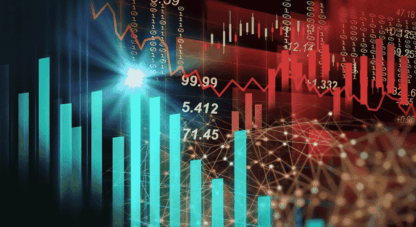America’s current leadership clearly believes the biggest problems facing the nation are the inequality of status and means among residents, the hurt feelings of people, and the need to thwart the territorial ambitions of nuclear-armed world powers.
Many of America’s citizens tend to have somewhat different concerns. The upper class is concerned about perpetuating and expanding the good times. The middle class is concerned about inflation and ideology. And the lower class is concerned about surviving by getting or holding onto either an adequate-paying job or government program payment.
There’s a lot of politics in those observations, but the point here is not political. It’s practical, and it has to do with unity. Successful endeavors by groups of any kind depend on unity. They can disagree (somewhat) on how to get to the goal, and that can be very helpful to work through, but they must agree on the goal.
Multiculturalists have for years asserted that the strongest unity is one made up of contributions from many cultures. We’ve certainly seen some degree of that in countries where the situation involves groups that have much in common to balance out their differences—enough to allow them to agree on the goal and in general how to get there. But members of groups that have sharp differences in culture or religion do not assimilate very easily. They often create enclaves within the countries they immigrate to where they maintain the language, culture, and religion of their origins, and they have hostile relations with their host populations.
Again, the point here is not political beyond the fact that divisive politics have met divisive economics and more severely divided America than at any time since 1861. The division then was predominantly between two views. While the views on display now are legion, that fact is somewhat illusory. Economically speaking, there are two primary views—two primary goals—in effect now as well: control, dialectics, propaganda, and redistribution vs. laissez faire, facts, logic, and private property. Certainly purists in either camp are not in the majority, but this is where the battle lines are drawn.
These divided interests and goals interact and make more complex an already complicated scenario. The battle is joined, and the casualties are many. Be sure to spend some time each week with one or more of the analysts below, who make sense of the battle and help you avoid falling victim to it.
Key Takeaways:
- Dow Theory continues to be relevant
- It’s all about bubbles
- Lending gets even harder
- Are the metals preparing for liftoff?
The McAlvany Weekly Commentary: Beginning with the size, scope, and ongoing nature of the banking crisis, David and Kevin look to see what other economic sectors are in trouble. Prominent among them is the housing crisis. According to the Goldman Sachs Housing Affordability Index, “affordability is at its lowest level in US history.” That deeply affects the economy in its own right, but a resulting decline in real estate values has yet to fully manifest or impact the portfolio values of banks that hold real estate loans. Thus, crisis in one sector can deeply affect other troubled sectors of the economy. Moving on from real estate, the hosts discuss Dow Theory and follow its development from inception through its many champions—most recently Richard Russell. David explains Dow Theory in broad and easily understood terms—a primer that is of great worth for investors and others who want to understand markets better.
Credit Bubble Bulletin: Since leaving the gold standard entirely in 1971, America’s economy has proceeded from one monetary bubble to another. Despite this clear fact, few people focus on the bubble dynamic and its characteristics adequately. Doug does. He has been at this for many decades, and his analysis is still the definitive source when it comes to this bubble-to-bubble march to the next pop followed by the next bubble creation. The process is not without cumulative effects, however, and Doug is also adept at explaining those. This week, among many other things, he explains the interplay between the equity and bond markets when bubbles are in play: “Why worry about the downside [in equities] when you know you’ll have the bond market loosening at the first hint of trouble—with the mighty Fed and GSE backstops always there as needed.” This interplay is getting more complex as the bubble reaches epic proportions and inflation and inflation fighting take center stage. Don’t miss Doug’s crucial analysis on these and related topics.
Hard Asset Insights: Morgan notes that, in regard to regional bank woes, “as long as the structural disconnect between the high rates individuals can earn on cash in money market funds relative to the low rates banks pay on deposits exists, a deposit drain is left wide open in the bottom of the regional bank liquidity tub.” The consequence, naturally enough, is that “rather than a fear-driven bank run, what we have in its place is an incentive-driven bank walk.” Run or walk, funds are leaving the institutions that traditionally have loaned them out, with the consequence that bank lending is drying up. Who cares? Well, “regional banks disproportionately serve the small- and medium-size business community, [which]…drives employment growth in the U.S.” Again, one sector in crisis affects others. The plot thickens, conditions worsen, solutions are elusive. Morgan provides his baseline assumption as to how the Fed will react going forward and how that will affect the economy.
Golden Rule Radio: Miles and Rob begin their weekly look at the markets by focusing on silver. For no discernible reason, it spiked up on Monday, returning quickly to its previous level and then trending down further before moving up to higher levels. Some of this action seemed keyed to the FOMC raise in interest rates, and the hosts surmise that its overall nature was anticipatory of higher silver prices. They give some helpful advice for those uncertain of immediate direction in the metals markets, and they also discuss premiums and their likely future if the metals turn up sharply as expected. The hosts also discuss the gold/silver ratio, the process of ratio trading, and the effect of product premiums on ratio trading. It’s a helpful education for those who wish to engage in this low risk/high reward strategy.















